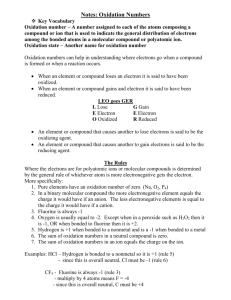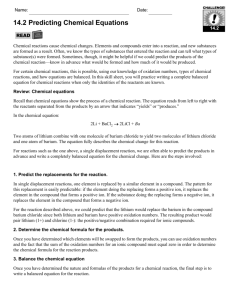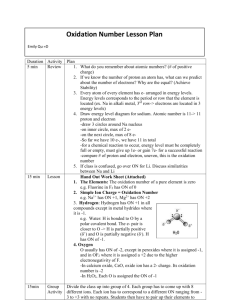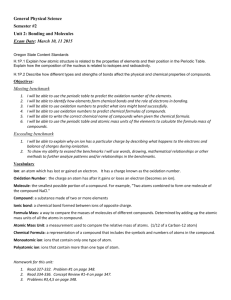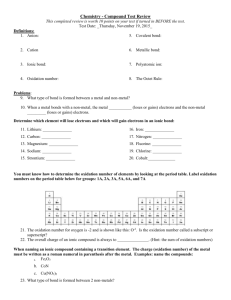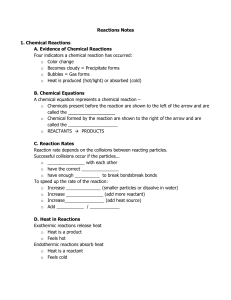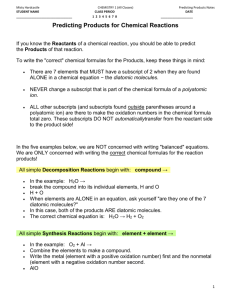Chapter 20, Section 3 “Writing Formulas and Naming Compounds
advertisement
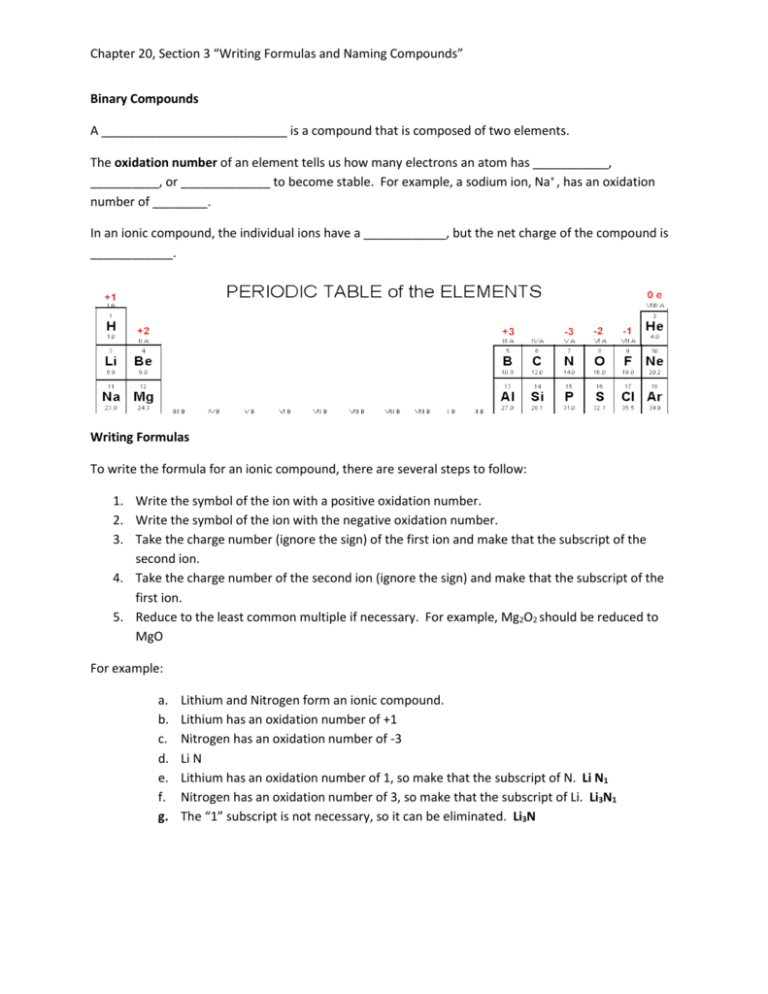
Chapter 20, Section 3 “Writing Formulas and Naming Compounds” Binary Compounds A ___________________________ is a compound that is composed of two elements. The oxidation number of an element tells us how many electrons an atom has ___________, __________, or _____________ to become stable. For example, a sodium ion, Na+ , has an oxidation number of ________. In an ionic compound, the individual ions have a ____________, but the net charge of the compound is ____________. Writing Formulas To write the formula for an ionic compound, there are several steps to follow: 1. Write the symbol of the ion with a positive oxidation number. 2. Write the symbol of the ion with the negative oxidation number. 3. Take the charge number (ignore the sign) of the first ion and make that the subscript of the second ion. 4. Take the charge number of the second ion (ignore the sign) and make that the subscript of the first ion. 5. Reduce to the least common multiple if necessary. For example, Mg2O2 should be reduced to MgO For example: a. b. c. d. e. f. g. Lithium and Nitrogen form an ionic compound. Lithium has an oxidation number of +1 Nitrogen has an oxidation number of -3 Li N Lithium has an oxidation number of 1, so make that the subscript of N. Li N1 Nitrogen has an oxidation number of 3, so make that the subscript of Li. Li3N1 The “1” subscript is not necessary, so it can be eliminated. Li3N Chapter 20, Section 3 “Writing Formulas and Naming Compounds” Complete the following table using the rules described above. Metal Valence Electrons Oxidation Number Nonmetal Lithium Fluorine Sodium Oxygen Magnesium Sulfur Potassium Phosphorus Calcium Chlorine Beryllium Nitrogen Lithium Oxygen Sodium Sulfur Magnesium Fluorine Potassium Oxygen Calcium Fluorine Beryllium Oxygen Lithium Sulfur Sodium Phosphorus Magnesium Chlorine Potassium Nitrogen Calcium Oxygen Beryllium Sulfur Valence Electrons Oxidation Number Ionic Compound Formula


